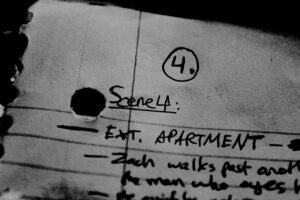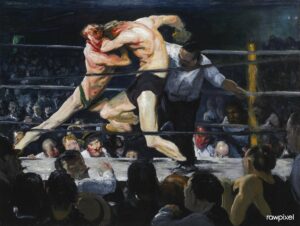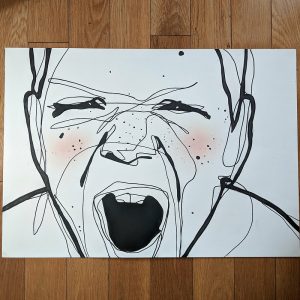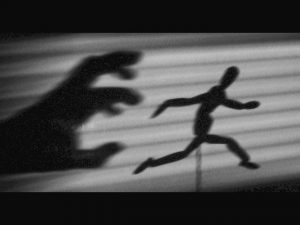Posts by Cathy Yardley
Petri Damstén
Are you burned out?
We live in an age of hyper-productivity. If you’re not doing a million things (presumably well) you are somehow failing.
The only acceptable excuse for lack of productivity is “I’m soooo stressed out!” which is worn as a badge of honor. (Either that, or you have a serious illness, preferably one that results in hospitalization.)
As writers, we’re supposed to be putting out any number of books, and either querying or self-publishing.
Add to that building our newsletter list, as well as creating content for every social media under the sun – there’s always a new one, or an old one that disappears and comes back, or whatever.
Or running ads. Building an ARC team.
And have you considered Patreon? Do you have merch? Have you done special editions or sprayed edges or new covers in a collector’s box on Kickstarter?
There’s always something else to learn, something else to do, and only so much time and energy.
Burnout doesn’t look like burnout.
As a writing coach, I’ve been teaching clients and students to be on the lookout for burnout for over a decade. There is no set approach to writing success, I counsel. Self-care above all.
Imagine my chagrin, then, when I realized I’d been burned out for a few years, all because I misunderstood my own energy and output patterns.
Read MorePhoto by Squirrelbrand
Dystopia can be enjoyable to write, but it’s painful to live in.
Let’s take a quick peek at cyberpunk. The Oxford Dictionary defines it as:
“a genre of science fiction set in a lawless subculture of an oppressive society dominated by computer technology.”
It has been around since the 60s, showcasing what sci-fi author Bruce Sterling terms “low-life and high tech.”
The world is oppressive, and those within it struggle to survive. There’s brazen violence, class disparity, and clawing despair hidden behind flashy, jaw-dropping technological achievement.
Rosy idealists don’t last long on these mean streets. Anti-heroes only need apply, if you keep your morals flexible even if your intentions are good.
Cyberpunk is hopeless by nature
There are no happy endings. Cyberpunk as a genre emphasizes that “the house always wins.”
If you’re in the system, you cannot beat the system. You can only:
When life imitates art
A quick glance at the news shows a world polarized, in varying states of conflict and chaos, with many places suffering war or environmental disaster. All against a technicolor backdrop of technical promise and A.I. everywhere, for everything.
It’s easy to become overwhelmed to the point of numbness and disassociation.
What’s worse, for some it’s become de rigueur for some to performatively embrace nihilism and extremism. (My Gen Z son taught me the term edgelord, meaning, also according to Oxford, “a person who affects a provocative or extreme persona, especially online.”)
So what’s the point of writing anything in the face of all this pain, hopelessness, and ultimate destruction? Other than playing your violin on the Titanic, or raging against the dying of the light… how will writing do anything in the face of a nightmare?
A counterpoint: solarpunk
Recently, I was fascinated to discover the existence of solarpunk.
While my beloved Oxford hasn’t quite caught up to this one, I resorted to Dictionary.com and got the following definition:
“an optimistic environmentalist subgenre of speculative fiction, art, and design that envisions future life on Earth transformed by the use of sustainable energy, close co-existence of human beings with nature, and progressive sociopolitical values.”
Interestingly, it has some similar trappings of cyberpunk, as far as fast progression of technology, but instead of responding with a projected outcome of decay and destruction, it shows what happens, or rather what could happen, if people are responding differently.
In these stories, there is still conflict and drama. But it’s a different kind of tension – and it shows a potential dream, rather than a prison sentence, thanks to deliberately refusing pessimism. You can read this in works by Ursula K. Leguin, among others.
The rise of cottagecore
I’ve witnessed an increase in offerings that promote what they’re calling “cottagecore” with an aesthetic of coziness, comfort, and natural beauty. Think hobbit holes, or a Hideo Miyazaki film. Technology used thoughtfully, with purpose and with good results… in balance.
For every edgelord, perhaps even outstripping them, there are those people searching for an alternative. They want joy, and beauty, and, to put it bluntly, rest.
In an unrelenting world, they […]
Read MorePhoto by Tom Mrazek
I’ve mentioned reader experience in a previous post. It’s something I work on with my coaching clients, and it’s something I consciously use in my own novels. I got the term, and the concept, from UX – a tech term for User Experience, which goes far beyond “make it pretty and put the buttons here.”
While “designing” may sound sterile and soulless – tech tends to call to mind the glossy, edgeless, minimalist white of Apple products or the calculated, scientific heartlessness of AI – it truly isn’t.
Because we’re already doing it.
Any prewriting you do, any noodling of plot, daydreaming of character and setting, any imagined snippets of dialogue, any draft or revision… it’s all contributing to the design of your story and how the reader receives it.
So here are four steps to “design” a stronger reader experience.
Know your target audience intimately
To understand an audience, whatever genre, is to know their expectations: what makes them blissfully happy, and what makes them recoil in anger and disgust. It’s knowing where they’re begging for fresh new angles and surprises, and what dealbreakers can’t be “reinvented.”
One way to research this: read reviews, or look at posted reviews on social media. See what the discourse is for your area.
Another: hang out in reader groups… and by that, I mean lurk. Because readers groups are not meant for us when we’ve got our writer hats on. (If you protest and say you want to be a reader, then do not identify yourself as a writer, and don’t interact as one.) It’s a fact finding mission. Even if someone says something that seems utterly ludicrous to you, this isn’t about you, your perceptions of the genre, or your justifications or opinions. This is about learning what readers think and feel in the genre.
Also keep in mind: readers are not monoliths, and groups are not necessarily representative as a whole. Investigate a range of them. You can find them on Goodreads, or Reddit, or in various social media settings. Your results may vary.
Finally, read voraciously in your chosen genre/subgenre. If you don’t want to, ask yourself why. If you don’t like to read a genre you’re choosing to write, you may frankly be in the wrong genre. I see this in people who want to “reinvent” genres. They like the idea of something but hate the simplicity/formula/whatever of it. Later, it turns out they simply don’t like the genre and want to create something different (but make that same kind of money.)
On the other hand, if you once loved a genre, but now find yourself frustrated by elements of it, that may be the perfect angle to explore because odds are good other readers share your frustration. It could be a “hole in the market,” something you’ve identified in reader discourse in your other research.
But if you don’t read enough to see what probably ought to be kept in a genre, or how to twist something, then you’re possibly defining an audience you feel ought to exist, rather than truly connecting with one that you like and feel passionately about. If nothing else, read with a curious, analytical approach, so you can know […]
Read MoreThis year I decided to try my hand at screenwriting. I didn’t think it would be radically different, and in a way, I was right. Everything I’d learned about character and plotting gave me a leg up on initial creation.
But when it came to actually writing the story, in that format, the difference was mind-blowing.
Here are the biggest takeaways I’ve gleaned… so far, anyway. I sense there’s even more I’ve yet to learn.
IMPACT.
Imagine taking a 300-500 page novel, and then carving it down to 90-120 pages, without summarizing or losing depth.
Much like equipping a sailboat, every bit of usable “space” needs to serve a purpose – ideally more than one. There is no room for pure decoration. Every bit of action, setting, character, and dialogue needs to do several things at once, in an interconnected manner. It also must engage the audience, while moving the story forward.
(Note I didn’t include exposition. More on that in a sec.)
As Pascal once said, “I have made this longer than usual because I have not had time to make it shorter.” It’s often quoted in reference to the difficulty of writing short form fiction versus long. Screenwriting showcases this problem. It’s a puzzle, a fiction sudoku. The approach, however, can also apply to prose. The trick is to make sure you are applying it every time.
VISUAL.
Because film is a visual medium, there is an expected emphasis on both setting and action. “Show don’t tell” becomes less a guideline and more a mandate, especially since no exposition should be included. (You could include exposition in action blocks, but it’s frowned upon. If you can’t show it, the audience doesn’t know it, and there’s no point in including it. Also, you’re eating up precious page real estate.)
While writing isn’t visual, the concept still applies. You don’t need to abolish all exposition, and in my opinion, you shouldn’t. Still, talking heads in generic settings are static, both on screen and in prose.
The solution is ensuring that the environment your characters are in, and the action they’re taking in the scene, is not only more engaging, but provides context, emotion, foreshadowing, and most of all, conflict and tension (positive or negative.) Study what you’re trying to communicate, and see how you implement that visually. It’s about making sharper, smarter, and, per the last tip, more impactful choices.
SUBTEXT.
This is most often understood in terms of dialogue, which often takes up 40-60% of a screenplay.
You rarely want “on the nose” dialogue, baldly stating what a character is thinking, feeling, or planning. Subtext not only sounds more natural, it’s a multi-tasker. How something is said communicates character and environment. It injects emotion. It’s a good source of conflict. And of course, it provides information, but not in so glaring a way that the audience is yanked out of the immersive experience.
Subtext is a distillation of meaning, not just providing, but relying on situational context and characterization to reveal story. This ties into the previous point: with the right setting and action, and with a clear understanding of the character, your dialogue will be a lot easier to express in terms of subtext. All the moving pieces, interlocking like the gears in a Swiss watch.
TRUST.
Billy Wilder, one of the greats in […]
Read More
“The first rule of Fight Club is: you do not talk about Fight Club.”
Fight Club, the book and the movie, comes at you like a right hook. In my experience, you love it or you hate it. But unless you’re tragically hipster or a Gen Z nihilist, the last thing you are is ambivalent.
Which brings us to the topic of today’s post.
Welcome to the Suck.
I’ve been in the publishing industry for nearly 25 years. It’s always been the Wild West. Lately, though, it’s been looking less like a Western and more like a post-apocalyptic dystopia. We went from High Noon to The Hunger Games in six seconds flat.
In this landscape, your story is either a Sherman tank, or a ghost.
“One size fits all” fits no one.
I can’t tell you how many writers I’ve talked to who say their story “could appeal to everyone… anyone from age ten to seventy, any race, any gender, any walk of life!”
No, it really, really doesn’t.
Because nothing appeals to everyone.
Hell, I know people who don’t like pizza, and if that’s not proof there is no universally appealing thing on earth, I don’t know what is.
More importantly, appealing to everyone should never be your goal when it comes to writing, especially now.
“Universally appealing” generally means average, safe, standard.
That’s DMV beige. That’s unseasoned boiled chicken breast.
That’s ghost territory.
Turning it up to eleven.
It started with the rise of the internet, when a plethora of images, information, and interaction were suddenly, literally at your fingertips. Ironically, in a time where we have the largest buffet of brain candy in the world, people are starving for all the choices.
(If you’ve ever spent an hour perusing Netflix titles while choosing nothing, you know what I mean.)
As a result, it takes something truly vibrant, amplified, and dare I say polarizing to connect with the right readers… the ones who will not only love your work, but spread it like an underground rebellion through their various whisper networks.
In this environment, “meh” is the enemy. Ideally, you want people to either love it or hate it, but by God, they have strong feelings either way.
That’s what we’re looking for. Strong feelings.
But how do you do that?
Repeat with reader experience. Think about what draws readers to your genre. For example, in mystery, they love the puzzle, the challenge. They want the clues, the twists, the red herrings. They want to feel smart, but challenged. They want to know they could solve the murder – but still be pleasantly surprised at a fair, believable, yet unexpected finale.
Add depth to […] Read More
Photo by Robert Couse-Baker
I’m a romance author. I’ve written Chick Lit/Women’s Fiction (which is different from romance – any romance reader can tell you that) and I’ve written Urban Fantasy. But there’s a strong through-line of “happy love story” in all my work, spanning over a twenty-one year career, covering over twenty-seven novels, novellas, and serial episodes.
Imagine my surprise, then, when I got hit with the idea for a horror novel this year.
Terror terroir.
If you like wine at all (or if you’ve got a friend who is a vocal wine aficionado) you might have heard the term “terroir.” According to Oxford, “terroir” means “the complete natural environment in which a particular wine is produced, including factors such as soil, topography, and climate.”
On a secondary level, it also means “the characteristic taste and flavor imparted to a wine by the environment in which it is produced.”
That’s why the same kind of wine, like a Cabernet Sauvignon or a Chardonnay, can taste very different if one is from Oregon and one is from Australia. Everything around the plant is drawn in and influences the outer product, the grape, which in turn affects the wine.
I think that writers have terroir, too. Our environments, our upbringing, our circles of contact, all influence the work we produce.
Welcome to hell.
Looking at the world now is to watch a planet ablaze.
Beneath it all, there is a pulsing, seething emotion. Not fear, or at least, not just fear. Rage. Some of it absolutely justified. Some of it horrifically excused or dangerously downplayed. Either way, it is getting amplified. If the world is a bonfire, then there are people out there gleefully tossing on napalm.
It’s been hard to focus on love stories. Not impossible, but a struggle… because romance is an exercise in hope. I find myself digging deep and using up a disproportionate amount of my energy to keep the words flowing on the page.
But as the year continues, and the fury and despair grows, I also find my writing ideas shifting. I feel this little story seed swelling like a bubble of poison, one that desperately needs to be leached out somehow.
Read MorePhoto by Magic_Nick
I can’t speak for everyone who has mental illness, and I’m in no way, shape, or form a medical professional. I can only speak about my experiences with it. I am diagnosed ADHD and bipolar 2, and it has taken me years to finally write this post. (I tried last August, but wound up pulling my punch and writing a more generalized post about anxiety.)
There’s a lot of romanticizing of mental illness by various writers and poets throughout history, either as a necessary element of creativity, or creativity as a balm for it. Do a Google image search on “madness” and “writers” and you’ll see dozens of arty quotes about “beautiful insanity” and the like. They see mental illness as this glorious, passionate, technicolor acid-trip of imagination… when oftentimes it’s just being shackled to a high-school bully who won’t shut up.
Allow me to illustrate.
When your brain is not necessarily your friend.
You write a thing.
After a brief burst of happiness, you start questioning said thing. Slowly, you convince yourself that the piece actually sucks. It’s not just “bad but revisable.” It’s trash.
It doesn’t stop there.
Read MorePhoto by id-iom.
There is a meme, started by Matt Jones (@tinyarmoredone), that goes as follows:
me: *opens mouth to scream into the void*
the void: sorry, man we’re full up
me: what?
the void: there’s no more room, we’re teeming with screams
me: but –
the void: We. Are. At. Full. Capacity. Sir. Try a pillow.
It’s been feeling like the teeming void for a long time, and 2020 has only amplified it. The void’s at full capacity, but the screams just keep on coming.
I write romances. To be even more specific, I write geeky romantic comedies. All my agents have characterized my voice as incorporating humor: it’s a selling point, it’s my shtick, it’s my brand.
Needless to say, I have not been feeling inspired.
It’s been hard for me to be motivated to write about love, no matter how much I believe in it, and laughs have been thin on the ground. Rather than story ideas, I have been hit with a powerful and inchoate rage, so immeasurable and overwhelming that I feel like I could spontaneously combust.
Putting my writer’s coach cap on, I keep trying to think of what I would say, if I were faced with a writer who was struggling with depression and despair in the face of a world on fire. This is the best I can come up with:
Read MorePhoto by Tom Burke.
There seems to be two prevailing attitudes when it comes to the pandemic.
First, there is the productivity school of thought.
This generally means plans to finally finish that novel (hell, maybe write several novels) while simultaneously organizing your cellar, planting a garden, homeschooling your children, and participating enthusiastically during Zoom meetings with amusing background filters.
Next, there is the chaos approach.
This usually involves a lot of home-baked carbohydrates, a distinct lack of pants, and (if you’re Ina Garten) a martini glass full of Cosmopolitans the size of your head that you’re hitting like a sledgehammer well before noon.
Please keep in mind: I am not judging either stance.
The funny thing is, I have seen both of these mindsets (albeit in far less extreme forms) for years. Some writers wildly overestimate their capacity, for writing and for other things, and then beat themselves up when they fall short of the mark. Others may drag their feet, despondent over the state of their writing (or lack thereof) to the point of indulgent hopelessness.
What I’d like to do is offer a few tips for both sides of the spectrum, in the hopes of alleviating some related stressors and soothing the rough patches that you might be experiencing in “these uncertain times.”
Read MorePhoto by Psychic 2Tarot
Anyone who knows me knows I am a hard-core plotter. Under tight deadlines, it was important that I know where I was going – I didn’t have the time to do long exploratory manuscripts or puzzle things out in drafts. Of course, this is also my particular writing style. I like to plan, I lay things out, and I write in linear chronological order. That’s how I work.
I also help my coaching clients get from nebulous story ideas to plot points, no matter what their particular writing style is. I’m used to pulling order from chaos.
On a certain level, it seems organized, very structured. It’s like sudoku: you know what the story is supposed to add up to, then you look at the pieces and see where they fit. That said, the people I work with are usually baffled by the fact that I can somehow “look at” the amorphous mess of ideas that they have and come up with a three-act structure in an hour.
But writing is like any other art. It involves a balance between logic and intuition. Structure and unpredictability.
Magic, if you will.
When the templates and prep and planning don’t work, I believe it ultimately comes down to the subconscious. On a gut level, you know what your story should be. It’s just a matter of unlocking that, getting it from your gut to your brain.
Unfortunately, your subconscious speaks its own language.
When I have been beating my head against a wall, stuck on my own story, all the figuring and planning in the world are useless. I know there’s a story there. I can feel it. And I often wonder why my subconscious won’t just pony up and give me the answers I’m seeking.
But the thing is, my subconscious usually is giving me answers. I am just not always attuned to hearing them.
Think of it this way: if my subconscious was another person, I’d be yelling at them in English: “What do I do with this character? Is this the way the story should go? What’s the theme?”
And my subconscious is shouting back: “Clock! Beagle! Vague feeling of anxiety! The color blue! Lake Erie!”
What the heck do you do with that?
Read MorePhoto by Daniel Novta
Several lifetimes ago, I was a financial analyst for a large corporate healthcare system. Most of the finance analysts that I knew hadn’t started out in that field at all. Personally, I’d started out as an assistant who helped manage the books for our department. Most of us were struggling to keep our heads above water, and we had all kinds of audit issues and two different accounting systems and a really scary corporate comptroller with intimidating eyebrows.
The entire lot of us needed to improve our overall performance, in a hurry.
One day, the Powers That Be (namely, the scary comptroller) decided to hold a team-building exercise for the financial analysts. If you’ve ever lived the cubicle life, you know that team-building is usually viewed with derision at best, root-canal-shuddering revulsion at worst.
I was the first to show up. We had a guest speaker, who was wearing a novelty tie that looked like film from a reel of cartoons. “Hi! I’m Dr. Play!” he chirped, setting up.
What fresh hell is this?
Read MorePhoto by Meal Makeover Moms.
I am a huge fan of restaurants, cooking channels, cookbooks, and chefs. I’m also an eager reader of business productivity books. So when I found Work Clean: The Life-Changing Power of Mise-en-Place to Organize Your Life, Work, and Mind, by Dan Charnas, I did a little happy dance and snapped it up.
For those of you who aren’t restaurant junkies and who haven’t worked back of the house, “mise-en-place” (or “meeze”) is the prep work and basic routine that chefs use to manage their time, create their meals, and keep the dishes pumping out of the kitchen in a consistent and orderly fashion.
While restaurant food might be art, there’s a definite rigor there, and with good reason: if you mess up an order, or you take too long, people get hangry. Blood sugar drops and tempers flare.
And they’re right in the next room.
And there’s a chance you won’t get paid.
All bad things, all worth taking steps to avoid. If you want to have a Michelin-star quality restaurant, you absolutely need to have your act together.
The chef must deliver.
Personally, I found a lot of gems in this book as far as productivity and mindset (and some great stories about chefs, if you like that sort of thing.) But this passage in particular struck me like a brick in a sock:
Read MorePhoto by Stuart Anthony.
Being a writer often means hosting a legion of insecurities.
Impostor syndrome? Check.
An overload of empathy, perhaps – creating an over-sensitivity to what’s going on with other people? Yup.
Fear of rejection? Absolutely.
There are rarely writers who glide through the day, getting their however-many-thousand words on the page before switching gears and then gracefully promoting with that perfect balance of humility and self-confidence. Those that do appear to “have it all” usually have the shiny gloss of an Instagram post: that sense of “naturally staged” perfection, something that doesn’t allow the murky, ugly underbelly to show.
There’s a reason for that. Being vulnerable is, quite frankly, terrifying. Also, it’s all too easy to be judged, quickly and brutally, especially in today’s anonymous comment culture. Who wouldn’t try to curate their presence in the world? Who doesn’t? If we’re honest, no one is completely raw when it comes to their outward-facing persona. Even people who proclaim “I try to be my most authentic self” are often making a performative statement.
At its heart: anxiety.
We’re usually an introverted bunch, as well, far more comfortable with digging deep and talking about writing or whatever other subjects we’re passionate about, exhausted by small talk, appalled by anything that might be taken as self-aggrandizing (and of course, talking about our writing feels more like boasting and less like sharing, so we shy away from it.) Our work tends to happen in isolation. We can go for long chunks of time without interacting with anyone, if we so desire.
And yeah, we so desire. Quite a bit.
For many of us, the work can go in fits and starts, and a wellspring of creativity dries up into a desert of writer’s block. If or when we lose momentum, we can fear that we’ll never write again.
We can be a weird little bundle of neuroses. Sometimes that feeds the work. More often than not, though, it drains the writing and the writer alike.
How, then, to get past the anxiety?
Read MorePhoto by Cameron Degelia.
I have been writing professionally – as in, someone’s paid me for it – for the past twenty years. In the course of these years, I’ve developed my own writing routines, found my voice, and developed my process. I’ve even gone so far as to coach others in working with their own processes.
Today, I thought I’d give you a look at how I take an idea and then bring it to fruition.
First things first: ideation.
I have sparks for ideas.
Sometimes, it will be just a title. I wrote a novel called Couch World which was initially supposed to be about a young woman’s experiences through various forms of therapy – the therapists’ couches – but morphed into a novel about a homeless DJ who couch-surfed through San Francisco.
Sometimes, I’ll have a concept: modern twists and retellings of classic stories, or tropes that I want to build a framework upon.
Sometimes I’ll just have characters that I know I want to work with.
This is the hardest part of the process. It can take months or years to marinate. I “work” a story idea by opening a “foundation” document. It’s a stream of consciousness piece. There is a lot of “um” and “so” and “hmmm” as well as statements like “GAH WHY DID I THINK I COULD WRITE THIS?” and “BLERGH.”
I ask myself questions. Whose story is this? How do they change? How do I want the reader to walk away feeling after they read this? Is this my story to write?
I’ll admit: this part often feels like I am banging my head repeatedly against a cinderblock wall.
Read More





















